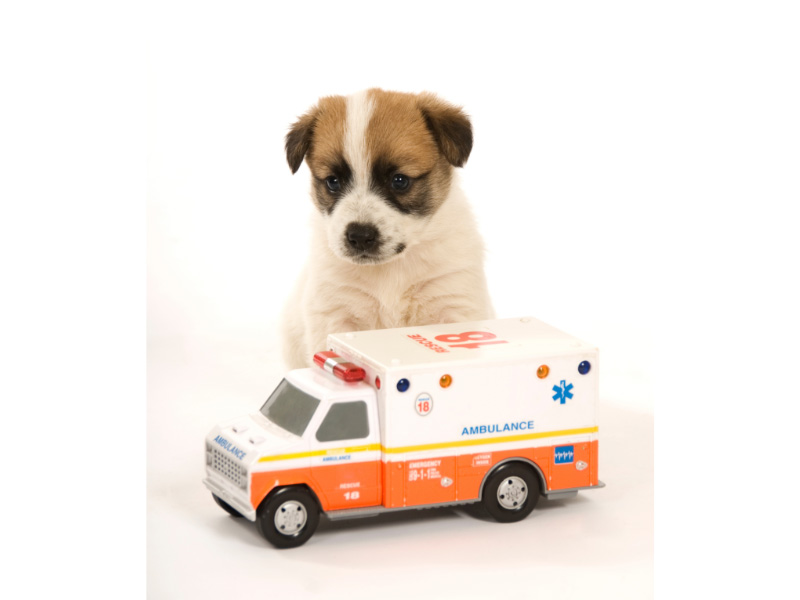7 Warning Signs That Your Dog Needs Emergency Vet Care
Doctor of Veterinary Medicine

While efforts are made to answer all questions as quickly as possible, if an immediate answer is required or if your pet is in need of urgent or emergency care, contact your pet's veterinarian immediately.
Doctor of Veterinary Medicine

You will receive an answer from Dr. Lindsay and our vet/tech team as soon as possible, usually the same day.
All answers are provided for informational or educational purposes only, and are intended to be a supplement to, and not a substitute for, the expertise and professional judgment of your pet's veterinarian.
It may be necessary to consult your pet's veterinarian regarding the applicability of any opinions or recommendations with respect to your pet's symptoms or medical condition.
CloseDoctor of Veterinary Medicine

An error has occurred, please reload the page and try again.
CloseWhile efforts are made to answer all questions as quickly as possible, if an immediate answer is required or if your pet is in need of urgent or emergency care, contact your pet's veterinarian immediately.
There is no answer related to your question

Most dog parents will have to make this tough choice at some point. Your dog is not feeling well, and you’re not sure whether they just need some TLC at home, can wait to see their usual vet, or need to be rushed to the emergency room.
An emergency vet hospital is equipped to diagnose and treat life-threatening conditions, and they’re usually open for extended hours, some even 24/7 to provide critical care around the clock.
When your dog is hurt or sick, look for these seven warning signs that your dog needs emergency vet care:
1. Labored breathing.
Anytime your dog has difficulty breathing, it should be considered an emergency. Also keep in mind that excessive panting when they’re not hot, stressed, or tired can be a sign of serious heart or lung issues.
2. Distended belly.
Seen in all breeds but most common in large, deep-chested dogs, gastric dilatation-volvulus (GDV), also called bloat, is a life-threatening medical emergency. When a dog is experiencing bloat, its stomach fills up with air and/or food and twists. A bloated stomach builds up pressure in the chest and abdominal cavity, preventing blood from circulating and carrying oxygen to other internal organs. Symptoms include a distended belly, unproductive retching, and restlessness. Bloat becomes fatal in less than two hours if left untreated.
3. Vomiting and diarrhea.
Most dogs experience bouts of vomiting and diarrhea every now and then, especially when they eat trash outside or when introduced to a new food that does not agree with them. Gastric symptoms become serious if your dog has severe, repeated episodes, if there’s blood, particularly if it’s dark in color like coffee grounds, if your dog is a puppy or senior or otherwise in danger of life-threatening dehydration, or if symptoms do not subside within 48 hours.
4. Seizures.
Epilepsy affects about 0.75% of all dogs, and can often be managed with medication. But if your dog has never had a seizure before, they need to see a vet as soon as possible. Possible causes for seizures include toxicity, dehydration, low blood sugar, or an inherited idiopathic disorder.
5. Eye injuries.
Symptoms that affect your dog’s eyes should always be treated as an emergency, as infections and injuries can result in permanent vision loss. Cloudiness, bleeding, bloodshot scleras (whites of the eye), cuts, scratches, teariness, squinting, yellow or green discharge, and swelling are all emergency eye symptoms.
6. Bleeding and physical trauma.
Superficial cuts and scrapes can often be treated at home with a first-aid kit, but deep or large wounds can lead to serious blood loss and shock. If your dog has been in a fight with another animal, especially a stray or wild animal, they can be at risk for a serious infection like rabies. Getting hit by a car and other trauma can result in internal bleeding even if your dog does not have obvious external wounds.
7. Poisoning.
If your dog has ingested something toxic, like chocolate, raisins, grapes, household chemicals, antifreeze, or potentially poisonous plants or mushrooms, seek emergency veterinary care. It can take a few hours for symptoms of poisoning to set in, but just 30-45 minutes for the stomach contents to start to enter the bloodstream.
These are just a few of the major signs that your dog is having a medical emergency. A general rule of thumb is that if it were happening to you and you’d go to the hospital, your dog should too. If you’re still unsure, call your nearest emergency vet hospital for help.
 Swipe
Swipe



















